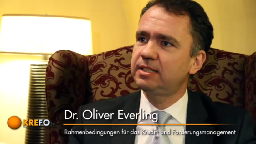« TELOS lobt weiteren Fonds mit AA | Home | Neues Rating für Investmentzertifikate »
Curbing Apodictic Language
Von Dr. Oliver Everling | 14.April 2008
Don’t believe everything you read in the Financial Times, warns Roger P. Nye, President, Global Investment Advisors, Inc., Carlsbad, California, USA (www.gia-inc.com), and provides us with a series of examples. Dr. Nye’s warnings from 2004 are today as newsworthy as they were then.
To name a few: „The rating agencies do not independently verify information.“ GIA response in June 2004: They do not have the mandate, the time, or the need as part of their due diligence to check every datum supplied by the issuer. They usually, however, confirm the existence of backup lines of credit for CP programs, and they do check company- and sovereign-supplied data with other publicly available data. The agencies are not supposed to be auditors, and they are not empowered or able to unearth fraud. The agencies are concerned with the ability and willingness of a debtor to meet his obligations, and they assume that the data presented to them are accurate. The analysts often do uncritically accept client information, such as strategic plans and market outlooks, and that may be a weakness on their part. GIA can give you guidance on this matter.
Another example from the Financial Times: „It should be made more clear what weight, if any, is given to important factors such as corporate governance.“ GIA response in June 2004: Agency credit reports and press releases are already quite clear in describing the rationale behind ratings and rating changes. The agencies list key factors that went into the ratings, the issuer’s SWOT, and what events or decisions are most likely to influence a future outlook or rating change. That is pretty precise, especially compared to 10 -15 years ago when transparency was resisted at the agencies. Since ratings are the result of qualitative and quantitative factors, it would be very misleading to the market for the agencies to state that some factor had 30% weight in the rating decision. Finally, credit rating scales and corporate governance scales are not integrated so there is no „weight“ of one in the other.
„There should be procedures in place to minimize the conflicts of interest inherent in receiving fees from issuers.“ GIA response in June 2004: This allegation of „conflict“ has surfaced periodically over the past twenty years but it is not real. Some in the market still perceive that the agencies will be influenced in a rating decision because those they rate pay them for the rating. But this notion has been repeatedly put to rest, most recently in the early 2004 report by two members of the U.S. Federal Reserve Board, wherein no evidence was found of such a conflict.
Here is another way to look at the matter, says Nye: there is a „balancing dynamic“ involved in the rating process that avoids extremes and produces market-related outcomes. On the one hand, the agencies have an incentive to assign high ratings in order to capture business, but on the other hand, they have an incentive to assign low ratings to avoid reputation loss. These conflicting incentives result in a balanced outcome.
„Regulators should conduct inquiries into rating failures.“ GIA response in June 2004: What is a rating „failure“? If a AAA-rated issuer defaults, that would be a rating failure because the analyst and the rating committee missed the fundamentals. But if a BBB- issuer lies to the agencies or withholds vital information and then defaults (as Parmalat did), that is not an agency failure. And consider this, says Nye – the three agencies differ on as many as half the sovereign, bank and corporate ratings they issue. Does that make the ratings or the agencies themselves „wrong“? No, the ratings are just a professional opinion, the best available at the moment, on an issuer’s creditworthiness. The durability of the ratings business over the past century and the high correlation between ratings and actual default experience both indicate strongly that the agencies are doing something right.
Themen: Nachrichten | Kommentare deaktiviert für Curbing Apodictic Language
Kommentare geschlossen.
 Börse hören. Interviews zu aktuellen Ratingfragen im Börsen Radio Network. Hier klicken für alle Aufzeichnungen mit Dr. Oliver Everling seit 2006 als Podcasts.
Börse hören. Interviews zu aktuellen Ratingfragen im Börsen Radio Network. Hier klicken für alle Aufzeichnungen mit Dr. Oliver Everling seit 2006 als Podcasts.










